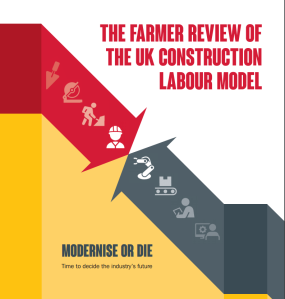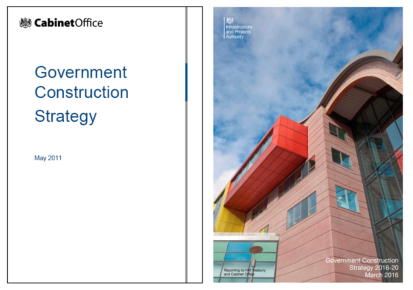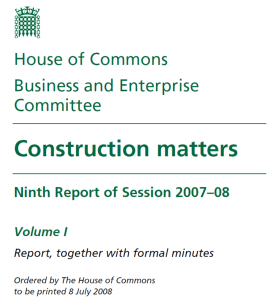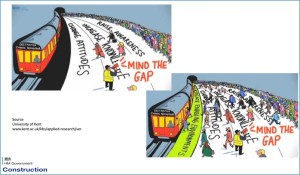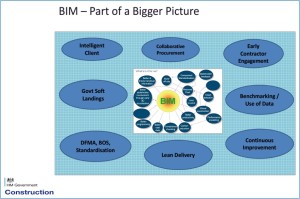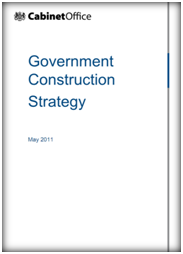Mark Farmer has added another publication to the bookshelf of self-improvement guides for construction. Modernise or Die is the headline grabbing title for the output commissioned by the Construction Leadership Council (CLC) (who are they, I hear you cry!) at the request of Brandon Lewis and Nick Boles (the ministers for Housing & Planning & Skills respectively at that time) to undertake a review of the UK’s construction labour model.
I wholeheartedly agree with the assertion that a burning platform needs to be created to highlight the challenges the industry faces, not least the impending tsunami of the skill gap. Farmer is right that this problem needs to be addressed and immediately. Farmer adopts a medical process analogy to articulate the well-known symptoms and provides a candid diagnosis that leads to the prognosis “the industry must modernise or die”. The question is whether the prescribed treatment plan will result in the transformational change called for and I, for one, agree is urgently needed. The recommendations clearly identify what should happen, but to continue Farmer’s medical analogy, I fear the patient will not take any notice and the medicine will be left untouched along with a shelf full of other prescriptions.
The symptoms described are not new and not solely the preserve of the UK construction industry; these are global construction problems. However, the UK has a significant skills challenge with a predicted “20-25% decline in the available labour force within a decade”. This is a serious issue that does require a coordinated industry approach and state intervention. Farmer’s ten recommendations articulate what he believes “should happen”, but this to me is where it just becomes another book on the shelf. I cannot see any compelling evidence to suggest that these actions will be taken; I hope I’m wrong, but for me, it will continue to be business as usual.
I believe there is a lack of transparency over the institutionalised inefficiency that pervades the industry. Whilst most may recognise the symptoms, the systems we operate fail to provide a basis to improve. Hence, we need to change the system and Farmer’s third recommendation rightly urges “the need to leverage the CLC’s business models to improve relationships and promote R&D”; (but we’ve heard this before many times). What are these business models? How do they align with the New Methods of Construction Procurement developed as a result of the Government Construction Strategies (Cabinet Office 2011 and Cabinet Office & IPA 2015)? Evidence from the trial projects demonstrates what can happen and create some of the change called for here.
Researchers have questioned the effectiveness of this type of reform discourse, arguing that it is not enough just to understand the problem, “the socio-cultural structures and forces that influence behaviour and shape our views” need to be debated in order that we can “better engage with, and understand, the sources influencing the issue of policy formulation and diffusion” (Smiley, et al., 2014). I’d suggest Supply Chain Analysis into the Construction Industry – A Report for the Construction Industrial Strategy provides a good starting point. Whilst Farmer refers to Construction 2025 and the government’s “commitment to having a strong industrial strategy”, the point is we need to influence policy more effectively as an industry and for me, Farmer saying that government “should recognise the value of the construction sector” is akin to telling a smoker to stop smoking. I question whether we as an industry understand how it should influence the ‘new’ industrial strategy. I’m waiting for the CLC to demonstrate the leadership the industry needs, but unfortunately, I cannot see our fragmented structure becoming a coherent voice anytime soon. Chief Construction Adviser anyone?
Farmer suggests that “this is not just another ‘’must do better’ school report”, however, I reluctantly disagree; whilst the prognosis is clear, I fear the prescribed medicine is unlikely to be taken and the patient is unlikely to improve.

